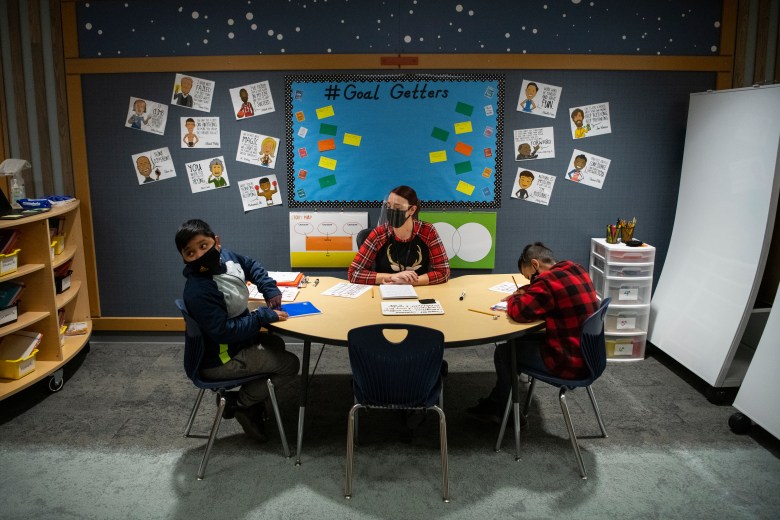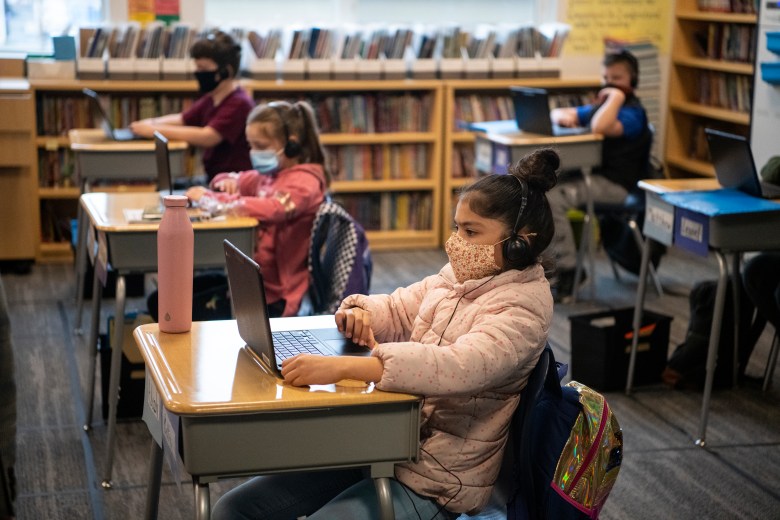CENTRALIA, Wash. — At 8:01 p.m., on an unseasonably warm April evening, Lisa Grant hit refresh on her internet browser. Grant had been the superintendent of schools in this old coal and lumber town on the side of I-5, the major highway running the length of the west coast, for just 10 months. Tonight, she’d find out if she’d have the funding she needed to keep doing that job.

The Washington secretary of state’s website didn’t immediately update, so she hit refresh again, and again, until the early results of a vote on her school district’s property tax levy appeared on the screen.
Voters in the Centralia school district, it seemed, would again reject a ballot proposal to bring in $9.1 million over two years for their schools by renewing an existing property tax. It would be their third rejection in less than a year and a half. States and the federal government contribute some money to school budgets, but most are still dependent on local support to survive. Losing the revenue from the local property tax the first time had led the Centralia school board to issue pink slips to nearly 100 staff members and had even put the athletics program on the chopping block.
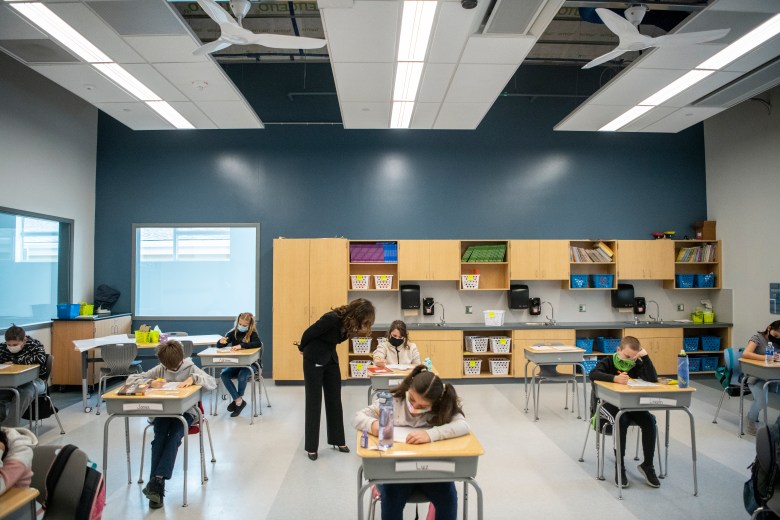
Managing an always-too-tight budget is just one of the challenges facing superintendents in small- and medium-size districts these days. Explosive political fights over masking, vaccines and critical race theory have resulted in superintendents in places as different as rural Oregon and suburban Maryland resigning or being forced out of their jobs under pressure from newly zealous school boards. About 25 percent of superintendents left their jobs last year, according to the American Association of School Administrators. So far, Grant has stayed.
On that anxious spring evening, Grant knew final results wouldn’t come in for at least a couple more days. But that night the proposition was failing by 23 votes. She took calls from the local newspaper and radio station, telling reporters, “We’re holding out hope.”
A former special education teacher who grew up in Oregon, Grant rarely considers a problem without mentioning how it affects students. She’s quick to list solutions and quick to laugh.
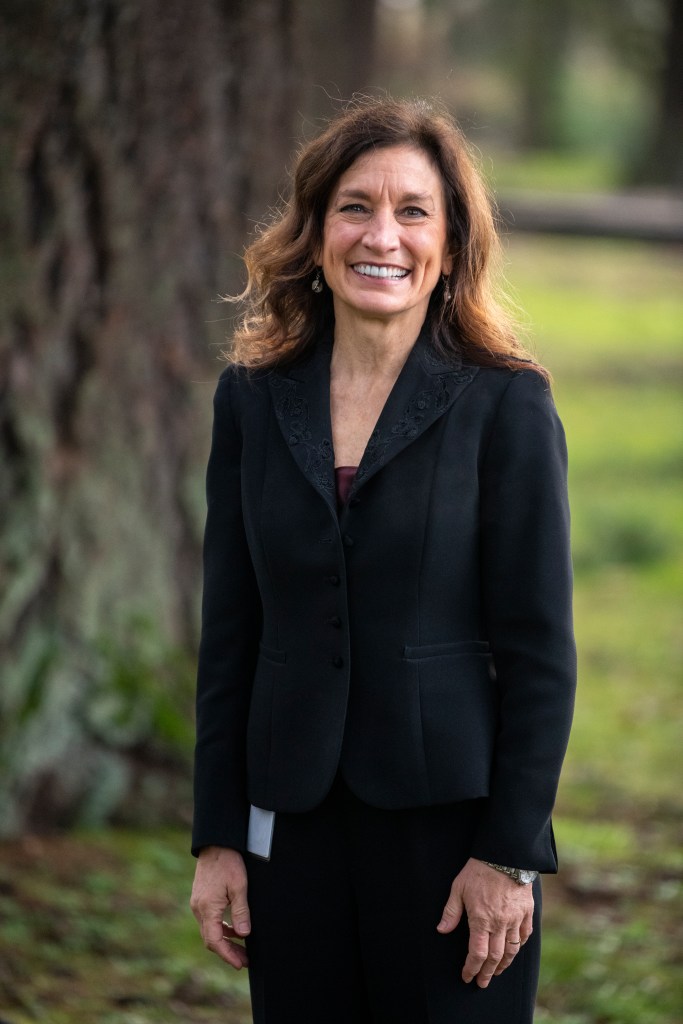
“She was brimming with enthusiasm and seemed so excited to be there,” said Lori Fast, former president of the Centralia school board, recalling Grant’s first interview. “We wanted to bottle up that energy and have her start the next day.”
But just over a year later, as she waited for the election results in April 2021, Grant was exhausted. There had been a pandemic, the district’s financial situation turned out to be as bad as Fast and other board members had warned and now she had to prepare for potentially more cuts. Before heading home, Grant phoned her husband — a pandemic routine — letting him know she was on her way. He cautiously asked, “What should I prepare for?”
“I remember feeling mixed emotions, such disappointment that we didn’t make it initially but knowing it was so close,” Grant said months later.
A 2019 study from the nonpartisan Albert Shanker Institute found only five states spend enough money to help students in high-poverty school districts achieve test scores that meet the national average; Washington ranked among the lowest spenders on that list. And while recent reforms here attempted to narrow the gulf between wealthy and low-income schools, critics question whether Washington’s complicated new funding formulas provide enough money to support all students.
“Washington … is so close and yet so far from the goal,” said Zahava Stadler, a special assistant for state funding and policy at the Education Trust, a national nonprofit that works to close opportunity gaps.
“We need to remember that there is no federal right to public education, but every single state constitution mentions a right to public schooling,” Stadler said. “It is the states that assigned themselves the responsibility of doing right and doing fairly by students, and it is appropriate and necessary to hold them to that.”
Related: “Kids who have less, need more” — The fight over school funding
Getting voter support in a cash-strapped, conservative-leaning town like Centralia is hard. The tax measure that kept Grant at work late in April 2021 first failed in February 2020, just a month after Grant accepted the job as superintendent of Centralia schools. It also failed in August 2020, a month after she’d started. And 13 months into a global pandemic, the prospect of once again banking the financial future of the town’s public school system on the will of its voters struck Grant as especially risky.
That April evening, Grant left the district complex feeling disappointed and frustrated. The two-building central office sits across the street from Centralia’s only middle school; nearby, towering Douglas firs dot the high school campus and a large boulder at the school entrance features a student’s painting of the school mascot, a tiger, wearing a face mask.
Centralia is home to about 18,000 residents, 3,400 of whom are students in the public schools. “Tiny Tigers,” whose presence is announced on lawn signs throughout the small city, attend the district’s five elementary schools. Congratulatory banners hanging from lampposts wave the senior portraits of each graduate in the Class of 2021. But in April, if history was any indication, all that school spirit wouldn’t necessarily translate to financial support.
Later that night, after exhausting her frustration on an exercise bike, Grant replayed two videos she had created to put on the school district’s social media pages. There was one to use if the tax proposal failed, the other if it somehow passed. She couldn’t remember dreaming when she finally let herself sleep. And not long after her alarm rang at 4:30 a.m., she fielded a call from a school board member angry about the vote.
“No matter what happens we’re going to move forward,” Grant remembered saying. “Everything has to move us in a positive direction, even if this isn’t a positive experience.”
The federal government moved quickly early in the pandemic to support K-12 schools, approving $13.2 billion in March 2020 to cover unanticipated costs. And by the spring of 2021, Congress had approved three separate rounds of the Elementary and Secondary School Emergency Relief fund, known to educators as ESSER, sending a grand total of nearly $190 billion hurtling toward classrooms that have not seen such federal largesse since 2009, during the Great Recession.
But the emergency funding is temporary — the last of it must be used by 2023 — and it won’t fix the long-term problems faced by school districts like Centralia, which were broke long before the pandemic started.
$190 billion — the total amount that Congress approved in three rounds of Covid relief funding for K-12 schools
In such places, a return to normal won’t be enough. Communities like Centralia, which has a small tax-base, can’t always count on local financial support, no matter how many Tiny Tiger signs dot the lawns. For these communities, what’s needed is the realization at the state or federal level that the amount of government money required to support schools — both before and potentially after the pandemic — is many times more than what has been spent so far.
On the local level, it’s not just a matter of voters’ willingness to tax themselves. Many homeowners have little sense for why the local schools always seem broke when they keep hearing about multimillion-dollar state budgets, which their property taxes already help support.
“The federal government, given the limited tools at its disposal, did the right thing” to send so much relief money, said Stadler, of the Education Trust. “But a short-term infusion of funds in districts that have been struggling with underinvestment for a long time is not going to be a silver bullet.”
Related: Rich schools get richer
In Centralia, as she waited for the final results of the election, Grant worried the federal boon could actually jeopardize “yes” votes for continuing a local tax.
“People think we have all this money to play with,” Grant said the morning after election night. “We have these federal dollars coming in but that’s not a recurring fund.”
Meanwhile, Centralia schools were short on staff, short on community trust and very short on money. In 2018, a teacher strike over demands for a salary hike delayed the start of school for a week. The previous superintendent, who eventually signed a union contract with hefty — and unaffordable — pay raises for teachers, left the central office mired in a culture of bullying and almost nonexistent communication with the public. And a new school board, swept into power in late 2019, discovered years of red ink baked into the district budget.
Although required by law to approve a balanced budget each year, the district forecast it would overspend its revenues by about $500,000 in 2021-22. The projected shortfall would eventually top $3.5 million in 2023-24, according to budget documents.
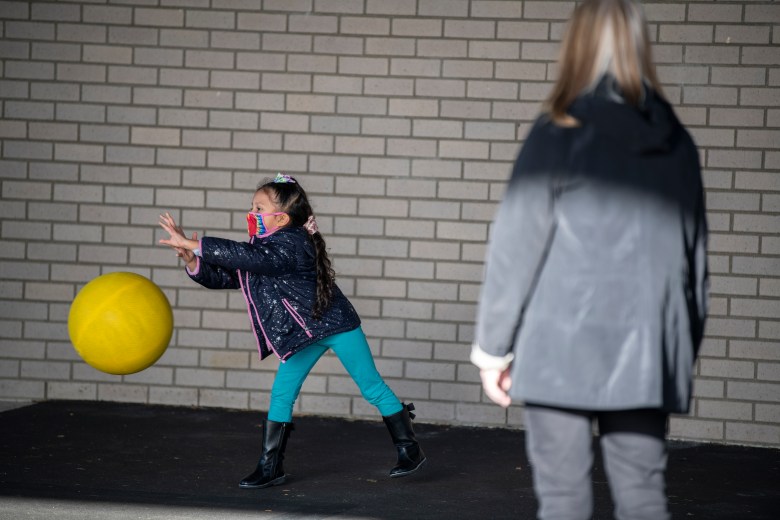
Centralia has also been losing a couple hundred students each year, at the cost of about $8,700 per kid. During the 2020-21 school year, Grant said, the district lost a staggering 476 students — some to a better-performing district nearby, some to homeschooling and others to virtual schools — for a net loss of about $4.2 million.
“That’s a school’s worth of funding,” Grant told a budget task force in early December.
She’d also learned in her first weeks on the job that the district had virtually no cash reserves to spend in an emergency. It had no long-term facilities plan to upgrade decaying infrastructure or to replace its aging fleet of buses, Grant said. In her estimation, it also had no sense of financial responsibility.
“One of the issues of why we lost the levy in the first place [was] people felt we gave too much to teachers [when] they went on strike,” she said. “The board was spending in the red every year. You can’t sustain that.”
Related: Should rich families be able to fundraise a better public school education for their kids?
Grant attempted to speak with her predecessor, Mark Davalos, to understand the budget mess. She never succeeded. (Davalos declined an interview request for this story.)
“It is what it is,” she said of the district’s past money troubles. “We can’t change that, but how do we move forward?”
The federal money will help Centralia and other small struggling districts for a year or two, but the pressure is on superintendents to spend it wisely, said Michael Griffith, a school finance expert with the Learning Policy Institute.
“If you spend like pre-pandemic, and don’t have additional results, that’s going to come back hard,” he said. “People come back and say, ‘We gave them all this money, and there was no return. There was no long-term improvement in schools.’”
The stakes aren’t lost on Grant.
In January 2020, during the hiring process, Grant appeared at a public interview and fielded an hour’s worth of questions about sex education, student poverty, the teachers’ union and property-tax levies. She touted her experience as a special education teacher, principal, central administrator and, most recently, superintendent of the neighboring Mossyrock school district.
Grant, who commuted to Mossyrock from her home in Centralia, easily rattled off facts about Washington’s school finance system and K-12 policy — a home-field advantage that distinguished her from the other finalist, a superintendent from rural Colorado.
“I can guarantee you that I can make mistakes,” she said of her leadership style, according to The Daily Chronicle. “I can also guarantee you that I will learn from them.”
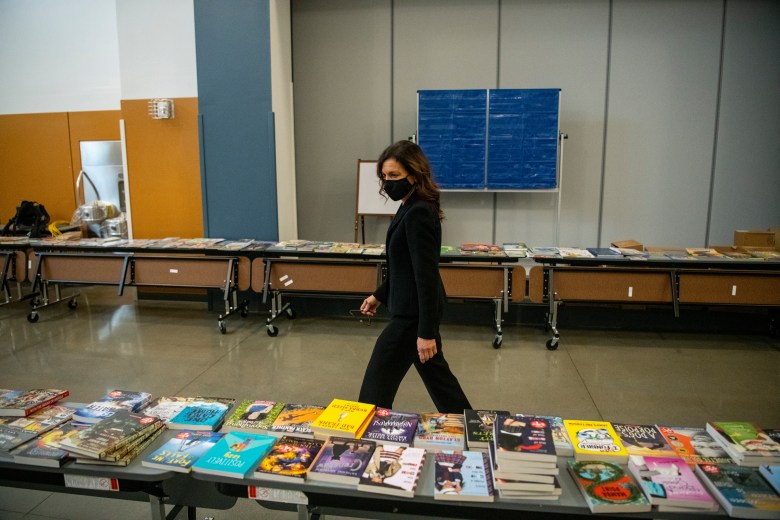
The board announced her selection that same evening. By the time she finally stepped into the role six months later, on July 1, the world had turned upside down. She walked into the central administration building that day and set down a box of family photos, desk décor and positive affirmation posters next to the desk in her new office. Instead of unpacking, Grant spent her first day in a crash course on the district’s planning for the start of school in just two months.
The box remained on her office floor, unopened and collecting dust, for the next nine months.
As the third vote on a tax levy drew closer, in spring 2021, there seemed to be a chance for victory, but a slim one. Voters had sent mixed messages in the previous two elections: A whopping 69 percent doomed the first tax measure. The second failed by less than 1 percentage point.
Related: One of the fairest school funding models in the nation might be about to fail
Mark Dulin, owner of a local construction company and vice president of the Centralia Community Foundation, always supported the school levies. (His wife, Sarah, teaches math at Centralia High and their son graduated from the school.) Nonetheless, Dulin could see why so many voters gave the levy a thumbs-down before: They were still seething over the 2018 teacher strike.
“It was very contentious,” Dulin said. “People remain offended that the schools were closed for days. [The strike] zapped what used to be a really good community rally behind the schools.”
Centralia’s failure at the ballot box also revealed an obscure quirk in Washington’s school finance system.
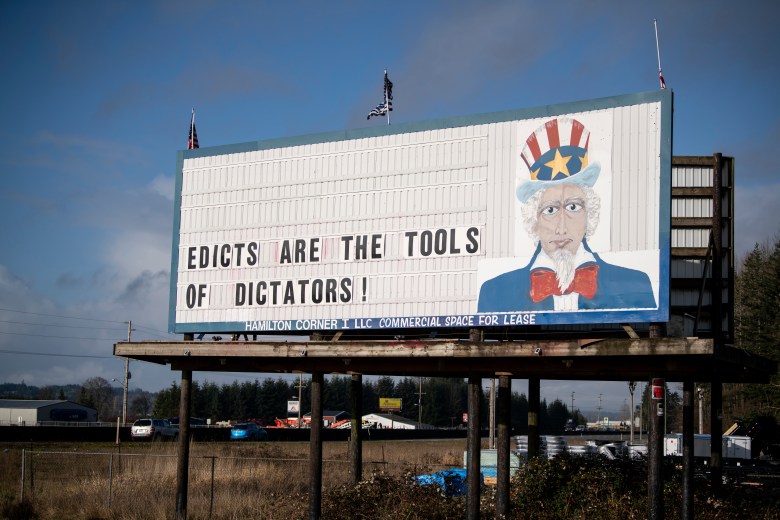
In Centralia’s case, the doomed February 2020 election guaranteed the school district would collect neither its local property taxes nor the additional state support. The lost revenue forced Centralia to trim a fifth of its entire budget — right at the start of a global pandemic.
“I wish our school funding wasn’t contingent on whether the community passes a levy,” said Fast, who will step down from the school board this year. “It’s really unfair that’s how the system works. Folks already feel taxed enough.”
On a sunny spring morning in March 2021, the Dulins walked through the neighborhood just west of Centralia College to try to convince voters this particular tax — one that would support the town’s Tigers — was worth extending. They paged through a stack of papers with the names and addresses of past and likely voters, hoping to convince more people to vote in favor of the levy and flip the narrow loss from August.
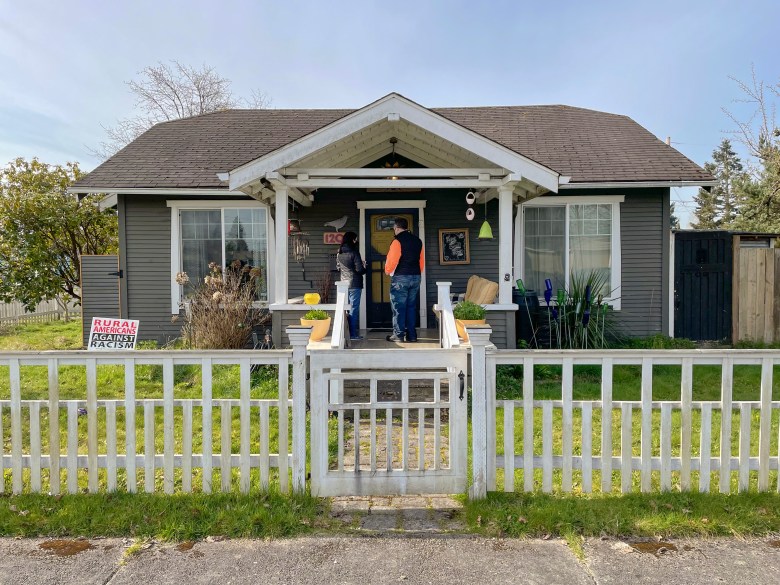
Front door after front door, their knocks went unanswered. Sarah Dulin tucked campaign flyers into mailboxes or between screen doors.
In 2018, she had joined the teacher walkout to secure a better contract. It’s also the reason she doubted the likelihood of a win this time.
At the time, she thought most people supported the teachers. After the strike, she said, everyone suspected the union would “raid the levy” for even more raises.
At one home, with a dog yapping behind her, a mother with a student in middle school answered the door. She listened to the campaign pitch, then asked if voting ‘yes’ meant the district would fully reopen soon.
“That needed to happen a long time ago,” said the mother. And didn’t schools just get a lot of money from the feds, she asked.
“Well,” Dulin replied, “it’s complicated.”
Months before the door-to-door campaign — in August 2020 — a Lewis County workgroup of superintendents, pediatricians and public health officials started meeting to discuss how to safely reopen schools. One of their top concerns was student mental health.
“With suicidal ideation, it’s never been at this level” said Jennifer Polley, director of the Northwest Pediatric Center in Centralia and a member of the group. Diagnoses of anxiety, depression and conduct disorder — in which children exhibit aggressive or destructive behavior — had more than doubled, she said. She even heard from pediatricians that children as young as 8 were talking about suicide.
“I don’t think we even know the depth of it yet,” Polley said.
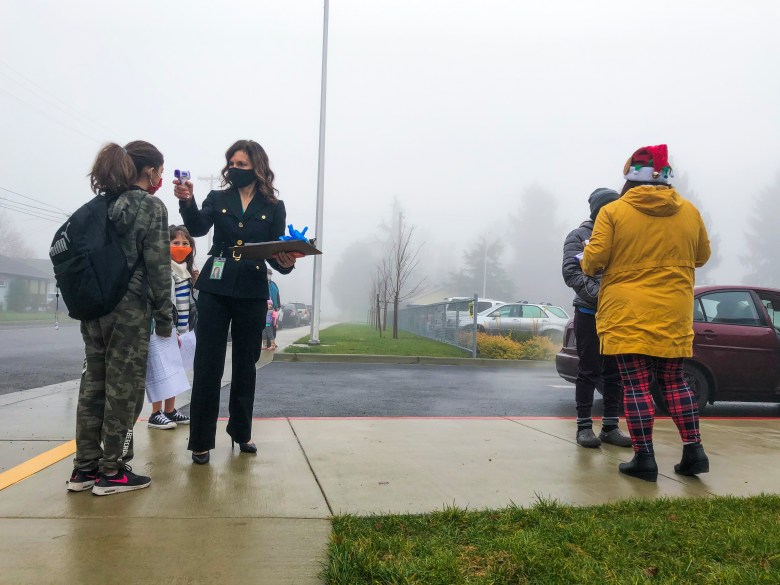
On March 15, 2021, almost exactly a year after ordering schools to close, Gov. Jay Inslee signed an emergency proclamation citing a youth mental health crisis and requiring all public schools to at least partially reopen. That same week, Centralia middle and high schools finally welcomed students back to campus.
The year without in-person learning fueled a lot of arguing between Gloria Delgado and her youngest son, a senior at Centralia High. He had already struggled with their sudden move to the small town from the San Francisco Bay area five years ago and he was still finding it difficult to make new friends or take an interest in school.
“The pandemic just exacerbated that,” Delgado said.
Balancing the mental health of 3,400 kids against the potential for outbreaks if schools reopened took a toll on Grant.
“My hair is greyer,” she said. “It’s a heavy responsibility, and one I don’t think any of us [superintendents] ever experienced to that degree … I know I wasn’t perfect at it.”
In Lewis County, nearly two-thirds of voters supported Donald Trump’s reelection bid, even as Washington state swung 58 percent in favor of Joe Biden. The county’s most prominent landmark — a billboard of Uncle Sam — greets drivers along I-5 with what the New York Times once described as “archconservative views in big block letters.” During the pandemic and Washington’s mask mandate, Uncle Sam warned that “edicts are the tools of dictators” and asked “What will the next Wuhan chimera virus be like?”
Although he found the prevalence of anti-mask sentiment and people questioning the reality of the virus frustrating, J.P. Anderson, the deputy director of Lewis County Public Health & Social Services, also sympathized with the community’s reaction to state orders and prolonged school closures.
“It’s defined largely by economic devastation that was caused by decisions made outside of Lewis County,” he said.
Related: Progress in the Deep South — Black students combat segregation, poverty and dwindling school funding
The first blow to the economy came in 2006, when the TransAlta Centralia Power Plant shuttered its coal mine, eliminating 600 top-paying jobs in Lewis County. The Great Recession soon followed, driving unemployment here to a peak of 15.4 percent in 2009.
Those losses affected Centralia’s schools too. In 2010, about 64 percent of students qualified for subsidized meals at school, a common gauge of household poverty. A decade later, 79 percent of students were considered low-income. As the schools’ finances floundered, its reputation suffered too, driving many families away: The district lost about 100 students a year, even before the pandemic.
“There’s real historical trauma,” Anderson said, explaining the local reaction to Covid mandates. “When [a decision] comes down and shuts down the economy and folks don’t have jobs any more, that’s suspect. That’s an enemy.”
On New Year’s Eve 2020, TransAlta closed one of its two coal-burning power plants in Centralia. By the time TransAlta extinguishes its second burner in 2025, a total of nearly 200 people will have lost their jobs.
Three weeks before winter break in 2020, kids in grades 4 to 6 returned to in-person classes. Grant was there to greet them, and make sure protocols were followed. Hands shaking — either from nerves or the December morning chill — Grant fumbled to catch the batteries falling out of a digital thermometer and onto the front lawn of Jefferson Lincoln Elementary. It was the second thermometer she had borrowed from the principal’s office. The first didn’t seem to work when Grant tested it on herself while walking toward a line of cars snaking around the entrance to the school.
Replacing the batteries, Grant hustled to join the school staff who approached each vehicle with a new routine: Cheerily welcome each student back to Jefferson Lincoln. Check their temperature. Collect a declaration that they had no symptoms of Covid-19.
One mother and her kids remained in their car, appearing confused by Grant’s request.
“You don’t speak Spanish, do you?” Grant asked the school staffer standing closest to her.
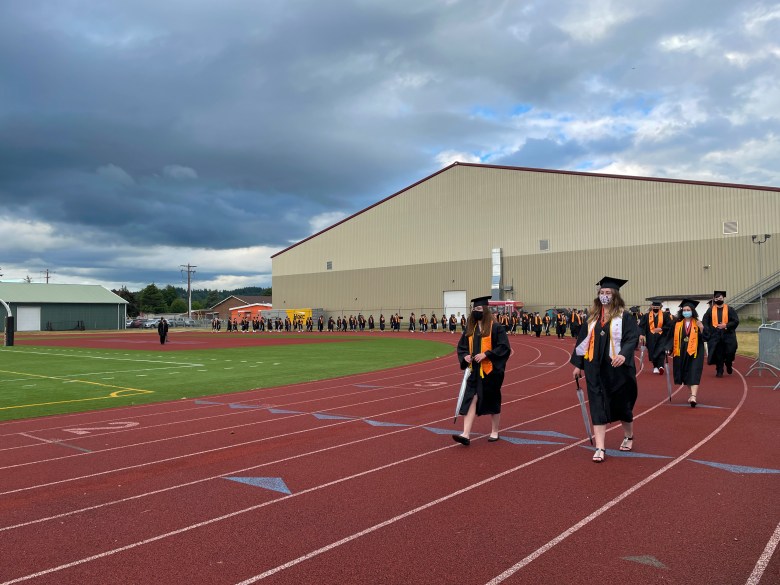
Earlier in the year, Grant had convened a reopening task force, hoping to bring all secondary students back to campus by early 2021. But negotiations with the teacher union had stalled.
“We have a ways to go,” Grant said, with a deep sigh.
The impasse joined a growing list of concerns for Grant, who struggled with how to address the mental health of both students and staff, language barriers with families who didn’t speak English at home and an uptick in the number of students experiencing homelessness.
Schools were also short on para-educators, having cut that budget by $2.1 million. At Jefferson Lincoln, that meant students in kindergarten through third grade got much needed one-on-one academic help, but older kids did not. And teachers supervised recess.
Parents, meanwhile, had started calling and emailing Grant to alert her to social media posts of teachers traveling for Thanksgiving or having parties at their homes.
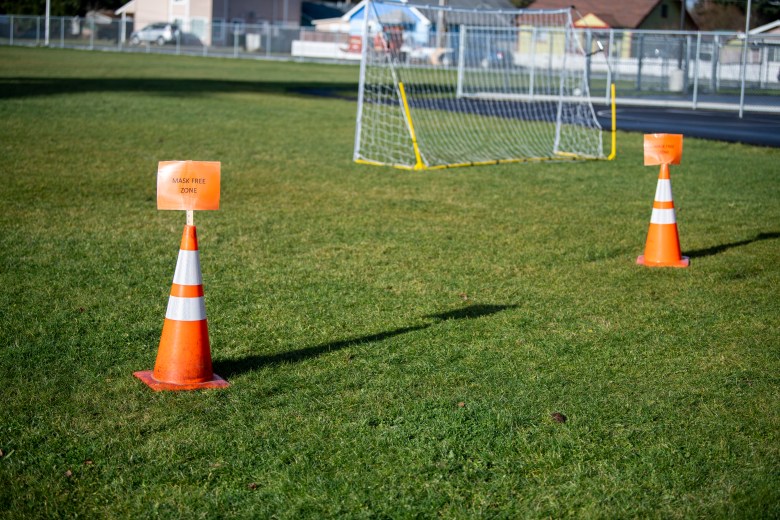
Grant asked principals to remind teachers of the safety protocols — and common sense. (“You can’t post that you’re at Disneyland if you’re supposed to be working,” Grant said.) Part of the problem, she added, was that about half of Centralia’s teachers didn’t live in the city or even in the county.
“There’s certainly a feeling that we have staff who bring different beliefs and ideas than our community holds, and that played out a bit in that tension between getting kids back and having staff feel safe,” Grant said.
After the first bell rang that December morning, a straggling student raced past Grant and through the front doors.
“Whoa whoa whoa!” she called after him. “Where’s your mask?”
Cursing, the boy ran back into the thick Northwest fog to check if his ride had already left.
In January 2021, the district received about $1.1 million from the first round of federal relief money passed in early 2020. Within three months of that disbursement, Grant said, the fund was about to be exhausted.
The district was spending about $18,000 each month just to cover internet access for students still learning at home, Grant said. It paid $36,250 for extra desks to bring middle and high schoolers back on a four-day hybrid schedule. And some of the federal money had simply backfilled months’ worth of spending on disinfecting classrooms, temporary custodial staff and personal protective equipment.
As school returned from winter break, Grant noticed a deep sense of fatigue creeping across the district.
Related: New data—Even within the same district some wealthy schools get millions more than poor ones
She had hoped the two weeks away from school would have recharged central office staff, teachers — and herself. Grant relied more and more on her husband, a project superintendent in construction, to make it through each dreary, cold day. But she also wondered how employees managed without a spouse or support network, especially as a third wave of cases and extended lockdowns prevented many from spending the holidays with family.
“I have a lot of energy, and I love this work. But I know I’m tired,” Grant said. “And I can tell [my husband] that I’m not thinking as quickly as normal. I mean, we’re all fatigued, right?”
The April election finally arrived. From that night when Grant repeatedly refreshed the voter results page, it would be 10 days before she knew the fate of her town’s schools.
“I don’t like that we have to rely on it,” Grant said of the levy election. “In Washington, we’re a pretty regressive tax system … so that’s a heavier burden on our community and our taxpayers.”
In the end, Centralia voters — by a margin of just 1 percent — approved the $9.1 million tax measure. Only 38 percent of registered voters cast a ballot, but it was enough. The district was also approved by the state to receive about $4.2 million from the second round of federal emergency funding and will need to apply to receive an additional $9.5 million from the third. If the Biden administration has its way, there will be more money down the line as well as incentives for states to commit to permanently increasing funding to high-poverty districts.
“I wish our school funding wasn’t contingent on whether the community passes a levy. It’s really unfair that’s how the system works. Folks already feel taxed enough.” Lisa Fast, outgoing president, Centralia School Board
Meanwhile, to get the estimated $4.2 million that Centralia schools were eligible for under the second Covid relief package, the district would first have to submit a recovery plan detailing how it would ensure seniors graduated on time, what it would spend the money on over summer and which interventions it would prioritize in fall 2021. Hiring new staff with the one-time money, which Grant said was “tempting,” could bind the district’s budget in the future.
“We have a lot of money. It’s a ton of money,” she said at the end of the 2020-21 school year. “If we misspend it and just go back to business as usual, legislators in the future will add tighter controls … That’s always the tension.”
Grant does not expect the extra state and federal money to last. It never has before.
“We won the support of the public, barely,” she said, “but that swing to trust us isn’t permanent. We have the opportunity to prove ourselves now.”
She doesn’t plan to waste her chance. Unless the federal and state governments commit to massive, ongoing increases in school funding, Grant knows that in two years, when this latest property tax expires, she’ll have to go back to Centralia voters with her hand out, asking again for their help.
This story about public school funding was produced by The Hechinger Report, a nonprofit, independent news organization focused on inequality and innovation in education. Sign up for the Hechinger newsletter.




